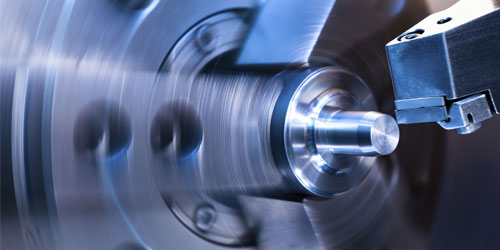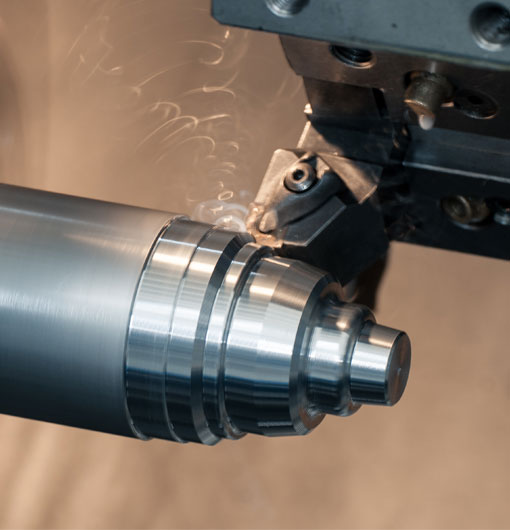Introduction
In the world of manufacturing, computer numerical control (CNC) machines have revolutionized the way we produce parts and components. From simple 2D cutting to complex 3D milling, CNC machining offers virtually unlimited possibilities. One of the essential aspects of CNC machining is the programming language that controls the movements and operations of CNC machines. This language consists of codes, often referred to as G-codes and M-codes, which dictate the machine's actions to create the desired part.
In this blog post, we will delve into the essential CNC codes for turning operations. We will go through the basics of CNC programming for lathes and discuss the most common G-codes and M-codes used in turning, as well as some tips and best practices for maximum efficiency and precision.
Understanding CNC Codes for Turning Operations
CNC turning operations involve the rotation of the workpiece while a cutting tool moves to remove material from the workpiece, creating a cylindrical part with a desired profile. The CNC machine controlling the turning operation relies on a series of codes to ensure the correct actions are taken.
G-codes are the primary commands that instruct the machine on how to move and manipulate the workpiece. M-codes, on the other hand, control the machine's auxiliary functions, like spindle control, coolant control, and tool changes.
Common G-Codes for Turning Operations
Below is a list of the most common G-codes used in turning operations:
1. G00 - Rapid Positioning: Quickly moves the tool to a specified point without cutting.
2. G01 - Linear Interpolation: Moves the cutting tool in a straight line at a specified feed rate.
3. G02/G03 - Circular Interpolation (Clockwise/Anticlockwise): Moves the cutting tool in a circular path, either clockwise (G02) or counterclockwise (G03).
4. G04 - Dwell Time: Pauses the machine for a specified amount of time.
5. G20/G21 - Unit System Selection: Specifies whether the program should use inches (G20) or millimeters (G21) as its unit of measurement.
6. G28 - Return to Home Position: Returns the tool to its home position.
7. G40 - Cutter Compensation Cancel: Deactivates cutter compensation.
8. G41/G42 - Cutter Compensation (Left/Right): Activates cutter compensation, either left (G41) or right (G42), accounting for the tool's radius when calculating its path.
9. G50 - Scaling Factor: Sets the scaling factor for all programmed coordinates and dimensions.
Common M-Codes for Turning Operations
Here are some frequently used M-codes in turning operations:
1. M00 - Program Stop: Stops the program temporarily.
2. M01 - Optional Stop: Pauses the program if the optional stop function is enabled.
3. M03/M04 - Spindle Control (Clockwise/Counterclockwise): Starts the spindle rotating either clockwise (M03) or counterclockwise (M04) at a specified speed.
4. M05 - Spindle Stop: Stops the spindle rotation.
5. M08 - Coolant On: Turns on the coolant to aid in cutting.
6. M09 - Coolant Off: Turns off the coolant.
7. M30 - Program End and Reset: Indicates the end of the program and resets the machine.
Best Practices for CNC Turning Operations
Now that we have covered the essential CNC codes for turning operations let's discuss some best practices to ensure optimal results:
1. Proper Tool Selection: Choose the appropriate cutting tools for the material and desired finish.
2. Correct Feeds and Speeds: Ensure the feeds and speeds are selected according to the material type, tooling geometry, and machine specifications to prevent damage and ensure the best surface finish.
3. Accurate Workholding: Use proper workholding methods, like chucks or collets, to hold the workpiece securely and reduce vibrations.
4. Quality Control: Implement regular inspection and measurement of parts throughout the production process to ensure consistent results.
5. Skilled Programmers: Employ experienced CNC programmers who understand the intricacies of turning operations and can optimize code for maximum efficiency and precision.
The Importance of CNC Codes for Turning Operations
CNC codes for turning operations form the backbone of the CNC machining process, enabling precise and efficient production of complex, high-quality parts. By understanding the basic G-codes and M-codes associated with turning operations and following best practices, manufacturers can significantly improve efficiency, accuracy, and quality. Continued education and skill development in the field of CNC programming will prove beneficial for manufacturing professionals, as innovations in machining technology continue to advance our capabilities.
cnc codes for turning













